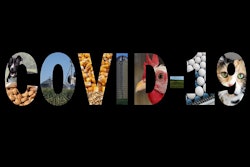
Supply chain disruptions have been an ongoing challenge of the COVID-19 pandemic, affecting businesses, retailers, consumers and overall economies. Unfortunately, experts predict the problems to last into 2022. What is the outlook for the pet food industry?
In his latest “Pet Industry Overview” reporting on fall 2021, Bryan Jaffe, managing director of Cascadia Capital, an investment firm focused on the pet industry, offered insights and projections. Based on his information, pet food manufacturers and suppliers, along with retailers and pet owners, should prepare for a continuing bumpy ride. “What was once perceived to be transitory is looking increasingly to be systemic,” Jaffe wrote.
Fill rates down, costs up (including for pet owners)
Before looking ahead, it helps to consider what has happened to date. Due to supply chain issues, fill rates for many brands have declined 10% to 20%, according to Cascadia data, though “best-in-class operators” have started to see a rebound since late in the third quarter of 2021.
Specific to pet food, “labor shortages and rising labor costs, elevated shipping costs and input cost inflation are all impacting third-party producers in consumables,” Jaffe wrote. Examples he provided of inflation include the cost of containers from China to the U.S. East Coast increasing 375% and, to the West Coast, 434%. Rather than improving since late 2020 or earlier in 2021, the rise in costs has only accelerated in the third quarter.
“The cost of chicken, the most common protein used in pet food, has increased 87% for the 12 months ending August 2021, and U.S. production labor costs have increased 3.4% per hour” for the same period, Jaffe added.
And, pet food companies are passing on the increases to consumers, according to a proprietary survey Cascadia conducted — 82% of the companies surveyed, in fact, have passed those on or are planning to by the end of the year. The majority of price hikes for their products fall between 5% and 10%, though 22% of the companies surveyed said their hikes are, or will be, higher than 10%.
Most of the price increases were passed on in the third quarter of 2021, Jaffe wrote, but a significant number are still to come in the fourth quarter, “meaning prospective inflation is evident.”
Will rising costs curtail pet food growth?
The upshot: The pet and pet food industry’s growth may not continue at the same robust pace it’s been on since mid-2020, in Jaffe’s opinion. “Growth projections continue to underestimate supply chain frictions,” he wrote. “Simplistically, you can’t sell what you don’t have, and while sales volumes are a cure, they are not a complete remedy.”
Plus, the ability of pet food brands to pass on rising costs to consumers may have a limit. While to date pet food inflation has lagged that of the overall consumer price index, it could be catching up, Jaffe said, and there could be a threshold to what pet owners are willing or able to pay. “We have underestimated pet owners in the past, but these are unprecedented times. This is the biggest risk to near-term category growth.”

















